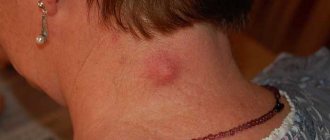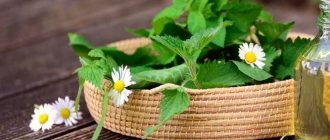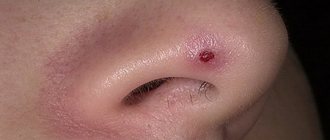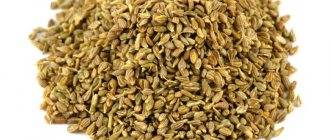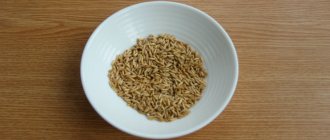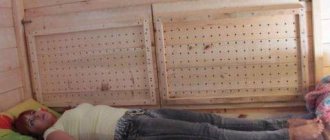The effectiveness of folk remedies
Traditional recipes have not lost their relevance today, despite the rapid development of the pharmaceutical market. Products based on natural ingredients are affordable and effective, time-tested. As a rule, treatment of eczema with the help of traditional medicine is most in demand in cases where official medicine turns out to be ineffective against the disease.
Experts do not prohibit the use of alternative therapy methods in practice, but strongly recommend not giving up medications, but combining their intake and use with medications of natural origin. This will allow you to achieve the best treatment effectiveness.
But for folk remedies to work, it is important to choose them wisely and use them in compliance with recommendations and precautions. Let's look at what you need to remember for alternative medicine to be effective:
- It is important to select herbal infusions and other natural ingredients individually, taking into account the characteristics of the skin disease. So, some recipes will work more successfully for dry eczema, while others will work more successfully for weeping eczema.
- Without medications, you should not expect quick results from traditional treatment: herbs have a cumulative effect and the effect of certain recipes does not appear immediately. Therefore, you should not start the disease by refusing medications prescribed by your doctor.
- Plants and other natural ingredients are not recommended for use during an exacerbation or relapse of the disease, as in this case the risk of developing an allergic reaction increases.
- All recipes should ideally be prepared immediately before use, the finished products are filtered and cooled before internal use or application to the skin.
- Before treating eczema with traditional methods, it is important to consult a doctor. This rule especially applies to children, pregnant and lactating women.
Folk remedies for eczema on hands
Eczema on the skin of the hands usually has a chronic, relapsing course. Symptoms of the pathology include intense itching and blistering rashes on hyperemic areas of the skin. After opening the papules, serous fluid is released, and purulent complications often develop.
Before starting treatment for a disease, it is important to find out its root cause and try to eliminate it. Provocateurs of eczema on the hands can be stress, hard water, extremely low temperatures, cosmetics and household chemicals, etc. The specialist prescribes medications for the pathology, which can be supplemented with the folk recipes listed below.
CABBAGE COMPRESS. This compress relieves inflammation and itching, soothes irritated skin. Boil several leaves of white cabbage in milk for 40 minutes. Cool the leaves a little and apply them while warm to the lesions on the palms and hands, in the wrists and forearms, fixing them with a bandage or bandage and wrapping them in a warm scarf or towel. The compress is removed after the sheet has cooled; the procedure can be repeated 3-4 times a day.
BIRD ROOT DECOTION. If eczema persists and does not go away over a long period, it is recommended to speed up recovery with burdock decoction. The roots of the plant are crushed into a paste, 1 tbsp. l. roots take 200 ml of water. Bring the ingredients to a boil and simmer over low heat for 15 minutes. The cooled broth is filtered and taken 1/2 cup in the morning and evening before meals.
OINTMENT FROM WALNUTS. It relieves itching well, promotes rapid regeneration and healing of the skin. To prepare the ointment, bake several whole walnuts in the oven for 30–40 minutes. The kernels are removed from the nuts and ground into a puree, a little fish oil is added so that the ointment is not too liquid. Lubricate the areas of the upper extremities affected by eczema with the resulting product.
Types of eczema on the hands. Symptoms and signs
Several types of pathology may occur in the upper extremities:
- endogenous, caused by internal disruptions in the body;
- exogenous, appearing under the influence of external factors.
All types of hand skin pathologies have common symptoms:
- skin redness;
- the appearance of a burning sensation;
- itching;
- dry crusty or wet patches of skin;
- skin rashes.
Depending on the type, eczema may have distinctive signs:
| By type of factors | Type of eczema | Subtype | Symptoms |
| Endogenous | True or systemic | — |
|
| Dyshidrotic | — |
| |
| Tilotic | Callosal Horny |
| |
| Exogenous | Microbial | Plaque Post-traumatic Bacterial Viral |
|
| Mycotic | Fungal Allergic |
| |
| Allergic | Professional |
|
Treatment with folk remedies for eczema on the legs
As on the hands, eczema in the legs is characterized by a chronic, relapsing course. The disease is more common in women over 50 years of age who are prone to varicose veins. The pathology is accompanied by swelling of the lower extremities, itching, dryness and flaking of the skin, inflammatory foci, often complicating purulent manifestations.
For treatment to be effective, it is important to follow a diet and abstain from alcoholic beverages, not wear synthetic underwear and strictly follow the doctor’s recommendations. In addition to official medicine, you can use folk remedies.
COMPRESSES FROM SAGE AND CHAMOMILE. The recipe has an anti-inflammatory effect, soothes the skin and relieves external signs of eczema. The decoction is prepared from 1 tbsp. l. sage and 1 tbsp. l. pharmaceutical chamomile. The herbal mixture is brewed with 200 ml of boiling water and left under the lid until it cools. In the finished product, bandages are generously moistened and applied to the diseased skin of the lower extremities. Repeat the procedure several times a day until recovery.
BATH WITH CREOLINE. The product is recommended for use in cases of severe inflammation and pain. Prepare a sitz bath for the feet or a foot bath at the rate of 1 tbsp per 7 liters of hot water. l. creolina. The duration of the procedure is 20 minutes. After finishing it, it is important to let the skin dry on its own.
OINTMENT FROM GARLIC AND HONEY. Relieves inflammation and itching, disinfects the skin. Boil 4 cloves of garlic, grind the finished product into a paste and combine with 1 tbsp. l. honey Apply the resulting ointment in a thick layer to the skin of the legs affected by eczema before going to bed at night. A bandage is applied on top.
How to get rid of eczema using folk remedies?
Eczema on the hands, which is quite difficult to cure forever, requires the use of gentle skin care products.
Vegetables
Cabbage and potatoes will be useful in treatment. To treat dry skin pathology, use fresh cabbage leaves, smear them with honey and leave them in the open air for 5 minutes. They must be applied to the affected areas of the hands and secured with gauze bandages. Sheets must be changed 2 times a day. Duration of therapy is up to 10 days.
Cabbage is also suitable for eliminating unpleasant symptoms of weeping eczema. To do this, its leaves are boiled in milk. And then mixed with bran. The resulting mass is applied to the affected areas for 10 hours. The procedure is carried out 1-2 times a day for 2 weeks.
According to another recipe, you need to grate a potato tuber, squeeze out the juice through cheesecloth and apply the mixture to problem areas of the hands. The compress needs to be changed 2 times a day. Take the remaining juice from the potatoes orally, 2 tbsp. 2 times a day. This remedy is suitable for treating any type of eczema.
Vinegar
Recipes that are effective in treatment:
- For wet eczema. Place 100 g of any vinegar, raw eggs and clean water in a blender. Mix all ingredients until smooth. It must be applied daily in the evening to the skin of the hands, while wearing cosmetic gloves on top. In the morning, the mixture is washed off with warm water. The duration of the course is at least 1 month.
- For dry eczema. Mix 2 tsp. apple cider vinegar and 250 ml water. Apply the mixture with a cotton pad to the skin of your hands up to 4 times a day. The duration of the procedures is 45 days.
Mustard for dry eczema
Prepare from 1 tbsp. eucalyptus leaves and 10 tbsp. boiling water infusion.
Mix:
- 1 tsp mustard powder;
- 1 tsp olive or linseed oil;
- 2 tsp eucalyptus infusion.
Apply the resulting mixture to the skin of your hands and wait 15 minutes. Rinse off the product with warm water. The duration of treatment is 15 days.
Sea salt
Recipes that are effective in treatment:
- For dry eczema. Mix 5 tbsp. sea salt with 500 ml hot water. Dip your hands into the solution. The procedure is carried out once a day until the water cools completely. After this, rinse your hands with cold water and apply baby cream. Duration of treatment is up to 20 days.
- For weeping eczema. Mix 2 tbsp. sea salt and licorice herb. Apply a bandage to the eczema for 2 hours. The procedure is carried out for 3 days in a row, then a 3-day break. Repeat the course until symptoms disappear completely.
Solid oil
Eczema on the hands, which can be cured forever only with an integrated approach, often goes away with the use of specific remedies, such as grease. For medical purposes, it is allowed to use a pure product sold in specialized technical stores.
The figure describes the stages of eczema on the hands.
Apply the product to the skin of your hands in a thick layer and leave for 10 minutes. Then wash it off with tar soap.
Every day the procedure time should increase by 10 minutes. After 2 months of treatment, in the absence of allergic reactions, it is allowed to use the product in the form of a night compress. The total duration of therapy is from 3 months.
Magnesia
This product is used in the form of a bath, which is suitable for any type of skin lesions.
To prepare it you need to mix:
- 1 tbsp. magnesia powder;
- 2 tbsp. pink salt;
- 5 drops peppermint oil.
Hands must be kept in the bath for 20 minutes. Duration of therapy is up to 2 months.
Creolin
This product requires caution when used, as it is a strong irritant.
Creolin for the treatment of eczema is used in several forms:
- Bath. Dissolve 1 tsp in 10 liters of hot water. substances and dip your hands in the resulting mixture for 20 minutes. After the procedure, allow the skin to dry naturally and apply baby moisturizer. You need to take such baths 2 times a day. The duration of therapy is 14 days. If negative reactions occur. Rinse the product off the skin and apply Flucinar cream.
- Ointment. Mix 1 tbsp. zinc ointment and creolin. Apply it to the skin of your hands 2 times a day for 2 weeks.
Treatment of weeping eczema
Weeping eczema got its name because of its specific clinical manifestations. The pathology is accompanied by multiple blistering rashes, which gradually open and begin to become wet, forming a wet surface on the inflamed epidermis. The development of the disease is promoted by stress and allergic factors, somatic pathologies, etc.
Treatment of weeping eczema is carried out using medication and physiotherapeutic methods. Together with them, it is recommended to use traditional methods of therapy at home.
WHITE MELLOT BATH AND COMPRESSES. It has a wound-healing, analgesic and anti-inflammatory effect. 2 tbsp. l. plants brew 1 liter of boiling water. Leave the broth covered for 1 hour, then pour it into a bath for therapeutic water procedures or preparing compresses.
CARNATION. Considered an effective remedy for eczema, the remedy softens the symptoms of the disease. It is recommended to thoroughly chew one clove every day in the morning and evening.
Treatment of dry eczema
An unpleasant form of the disease, accompanied by excessive dryness of the skin damaged by eczema. The pathology is characterized by a slow course, subsidence of the inflammatory process in the warm season and relapses with the onset of cold weather. Most often, the disease affects the skin of the hands and feet.
Dermatologists believe that dry eczema is provoked by diseases of the digestive tract and liver, and less often by stress and nerves. Treatment of pathology should be carried out under the guidance of a doctor; in addition to general therapy, a specialist may prescribe traditional methods of alternative medicine. Let's look at some of them.
COMPRESSES FROM POTATOES. They help to significantly improve the patient’s well-being after just a few procedures. Grind four medium-sized root vegetables to a pulp. Apply the potato mass in a dense layer to the damaged areas of the body, securing the top with cellophane and a bandage. After 30 minutes, remove the compress. Up to 4 such procedures are recommended per day.
DECORATION FROM WILLOW AND QUEEN. Recommended for use for dry eczema of the scalp. Take willow bark and dry string in equal proportions, mix and chop with a knife. Herbal collection in the amount of 4 tbsp. l. Brew 1 liter of boiling water and cover with a lid. After 30 minutes, rinse your hair. If dry eczema is localized in the facial area, the decoction can be used for morning and evening washing.
Treatment of seborrheic eczema
Seborrheic eczema, or dermatitis, develops against the background of excess sebum synthesis. The disease occurs with severe itching and peeling, hyperemia of the affected skin and copious separation of scales - dandruff. If the pathology is not treated, it will continue to progress, peeling will be replaced by crusts and scars, the symptoms of the disease will spread to other parts of the body - to the ears, eyelashes, eyebrows, etc.
The causes of seborrheic eczema are infectious factors. These are fungus and staphylococcal flora, hormonal and immune disorders, nervous feelings, etc. The disease is difficult to treat with medication, so its effectiveness can be enhanced with the help of traditional medicine.
MULTI-COMPONENT MASK. The ingredients of this medicinal composition have a pronounced antiseborrheic and anti-inflammatory effect. Mix in one container 1.5 ml of 9% table vinegar, 5 ml of camphor, 15 ml of salicylic alcohol 2%, 10 ml of Dimexide, 25 ml of a weak solution of potassium permanganate, 50 ml of water, 250 mg of Resorcinol, 2 g of sodium tetraborate and 1.5 d Trichopolum (Metronidazole). Mix the components into a homogeneous mixture and apply it to the areas of seborrheic dermatitis, such as hair roots. After 20 minutes, wash off the mask. Repeat daily. The course of treatment is at least 10 masks.
OAK BARK DECOTION. The product dries and disinfects areas of the stratum corneum affected by seborrheic dermatitis and soothes the skin. 1 tbsp. l. oak bark pour 2 tbsp. boiling water, simmer in a water bath for 15 minutes. After cooling, filter the broth and add 1 tbsp. l. honey The product is applied carefully, rubbing onto the hair roots and other parts of the body affected by seborrhea. After an hour, wash your hair with shampoo.
ONION-GARLIC MASK WITH NETTLES. The product fights fungal and bacterial infections, relieves inflammation. Grind the head of onion and garlic into a pulp, add to the resulting mass the same amount of fresh nettle leaves, chopped with a knife. Mix the ingredients, pour in 1 tbsp. l. linseed oil. Apply the resulting mask to areas of the body affected by seborrheic eczema for 20 minutes, then wash your hair with shampoo.
Eczema on the legs and how to treat it
The most common, caused by a hereditary factor, is eczema on the legs. It manifests itself at any age, even in infancy. Like other types of eczema, during the course of this disease there are periods of exacerbation and periods of remission. It initially manifests itself as a red rash, then developing into nodules on the toes. Afterwards, bubbles form, which, without timely intervention, begin to burst. Then a crust forms. All this causes itching and burning. You can also treat eczema on the legs using folk remedies. Let's look at some of the most common traditional healing recipes.
- Celandine. The most multifunctional plant against various types of rashes. It has an excellent antiseptic effect, eliminating itching. Extract the celandine juice by grinding the whole plant through a meat grinder. Soak a cotton pad in the liquid and apply to eczema. An infusion of celandine will be no less effective: two tablespoons of crushed celandine per glass of boiling water, let it brew for about half an hour. Moisten with infusion of eczema of the lower extremities several times a day. You can also make a cream. Mix lanolin, petroleum jelly and two tablespoons of crushed celandine leaves. Recommended use two to three times a day.
- Another, not entirely conventional way, is to treat eczema on the legs with eggs. You will need 6 hard-boiled yolks. Place each one on a knitting needle one by one and hold it over the fire until the whitish liquid flows out. This liquid should be collected from each yolk. Apply it to rashes on your legs.
- Mix raw egg, water and vinegar in equal proportions. Stir until the mixture becomes creamy. Lubricate the entire foot with the prepared mixture overnight and put on cotton socks. Change your socks in the morning and do not wash off the ointment until the evening. Then rinse with warm water and repeat the procedure at night. Continue until new skin forms on the feet.
- Coltsfoot is also used in the form of tinctures and ointments; its decoction is useful for various female diseases.
- Elecampane root has beneficial properties. Its infusion is taken three times a day before meals.
- Crush the bunch of grapes along with the berries. Apply the resulting mixture to eczema. It is advisable to carry out this type of treatment in several courses.
- Lotions made from cucumber brine.
- Solid oil. Heat 2 tbsp in a water bath. l. grease, then proceed to lubricate the affected areas. It would be a good idea to carry out the procedures at night and for at least thirty days.
- Burdock. Boil 2 tablespoons of burdock in a glass of water for five minutes. Drink a tablespoon before meals up to four times a day. Or make warming lotions for your feet.
Coltsfoot can be added to ointments
General Recipes
Treatment of eczema with folk remedies can sometimes be no less effective than medications. But doctors advise not to experiment with your health and to combine official medicine with alternative medicine within reasonable limits, not forgetting to consult with your doctor. Let's consider which folk remedies for eczema are most effective.
Treatment of eczema with solid oil
The lubricant contains fatty acids that have therapeutic effectiveness against various skin ailments. But not every solid oil is suitable for treatment - the technical one used in industry contains many toxic impurities, so it is not recommended to use it on human skin. You need a special medical grease, high-quality purified and safe for external use.
Let's list its useful properties:
- Slows down the processes of skin keratinization, reduces peeling processes.
- Moisturizes the deep layers of the dermis.
- Restores skin, heals wounds and cracks.
- Relieves inflammation, irritation and itching.
- Fights inflammation, microbial and mycotic flora.
Thanks to its versatile action, solidol can be used for any form of eczema. The product is used both independently and in combination with other drugs and natural ingredients. Let's look at some methods of application.
RECIPE ONE. Using solid oil in its pure form. Pour 15 ml of medical solid oil into a small container and heat in a water bath. Treat areas of inflammation with a warm solution. It is recommended to carry out the procedure shortly before bedtime, giving the product the opportunity to be absorbed. In the morning, wash off the grease from the skin with warm water. Course - 1 month.
RECIPE TWO. Ointment with grease and honey. 100 ml medical solid oil, 2 tbsp. l. honey and 20 g of dry crushed celandine are mixed in one container, closed with a lid and stored in a dark, cool place. In 10 days the ointment will be ready. The drug is applied to dry, clean skin in a thin layer 2 times a day, leaving until completely absorbed. An ointment made from these components will be effective for any form of eczema, as well as for more complex dermatological diseases, such as psoriasis.
If you can’t get medical solid oil, you can use ready-made preparations based on it, for example, pharmaceutical ointments Solipsor, Magnipsor, Kartalin and Ungvetol.
Application of St. John's wort oil
The oil of this plant is indicated for the treatment and prevention of any type of eczema. The product is recommended to be applied both to inflamed, dry and cracked areas of the skin, and to wet parts of the body covered with ulcers and serous discharge. In both cases, St. John's wort oil will have a pronounced therapeutic effect.
How to make your own butter? The recipe is simple: St. John's wort inflorescences are placed in a glass jar to the very top, lightly compacted. The plant is filled with any vegetable oil - olive, sunflower or corn, then covered with a lid and placed in direct sunlight for 3 weeks.
The finished St. John's wort oil is filtered; it should have the consistency of liquid yogurt or sour cream and be brown in color. The product is applied to areas of inflammation. It is recommended to continue the course of treatment until complete recovery.
Treatment of eczema with black cumin oil
Black cumin was brought to our country from the East. The product is effective against various pathologies, including dermatological diseases. Ready-made oil made in industrial conditions is not cheap, but you can prepare it yourself at home.
100 g of black cumin grains are ground using a coffee grinder and placed in a 500 ml glass container. The product is poured with olive oil up to the neck of the jar and closed with a lid. The future medicine is infused in a dark place at room temperature for 3 weeks, shaking the vessel daily. Strain the finished oil and use it for its intended purpose, treating areas of the body affected by eczema. Before applying the oil, it is recommended to wipe the skin with table vinegar. Continue treatment until symptoms of dermatitis disappear.
Application of mustard
Mustard is one of the ingredients used to prepare folk remedies for eczema on the hands. It contains vitamins A, B and E, calcium and iron, which have a positive effect on the restoration of skin and nail plates in case of dry eczema.
To prepare a healing remedy, dry mustard powder is diluted with boiling water to the consistency of liquid sour cream. Fingers and hands are dipped into the resulting warm mixture for 10–20 minutes, depending on how long the person can stand. If the disease is localized in other areas, the mustard medicine is applied with a cotton swab to the areas affected by dermatosis, including the scalp.
The course of treatment is 7–10 days. If you start mustard therapy in time, you can stop the progression of the disease and see a noticeable improvement in the skin after 2-3 treatments.
Swamp duckweed
Duckweed contains a high concentration of bromine and iodine, which has a positive effect on the healing and regeneration of wound lesions. The plant is equally effective for both acute and chronic eczema.
The use of duckweed in folk medicine is based on two recipes - fresh and in the form of an alcohol tincture:
- Freshly picked duckweed is crushed and mixed with honey in equal proportions, the mixture is transferred to a glass container and placed in the refrigerator. The product is taken orally daily, 1 dessert spoon for 2 years.
- Fresh duckweed is thoroughly washed, placed in a glass container up to the shoulders of the jar, filled with vodka up to the neck, and closed with a lid. The product is infused in a dark place for at least 2 weeks. The finished tincture is filtered and stored in the refrigerator and taken orally 15 drops 3 times a day, after dissolving with a small amount of water.
Pine oil
Pine oil is considered one of the good preventive and therapeutic agents for dry eczema. With regular use, the product combats flaking and dehydration of the skin, itching and inflammation.
Preparing the oil is not difficult: pine needles collected in March are placed in a three-liter jar up to the shoulders and filled with vegetable oil. The future medicine is infused in a cool, dark place for 3 weeks. The finished pine oil is applied to the skin affected by eczema several times a day - the more often, the better. Duration of treatment is 3–4 months.
Sea salt
Traditional recipes with the addition of sea salt activate metabolic processes in the skin, soften the severity of inflammatory processes, and strengthen the epidermis. After procedures using salt, it is recommended to remain calm, avoid wearing synthetic underwear and walk in the fresh air for several hours.
The simplest recipe is baths and baths with sea salt. They are prepared at the rate of 1 tbsp. l. salt per 5 liters of hot water. The duration of the procedure is 20–25 minutes; after the bath, the skin is blotted with a soft towel and a thin layer of sea buckthorn oil is applied.
A popular recipe is sea salt and licorice herb, mixed together in equal proportions. The mixture in dry form is applied to the foci of eczematous rashes and fixed on top with a bandage. The compress is left for 1 hour, after which the bandages are removed and the skin is washed with warm water. The course of treatment is 3 days, one procedure per day, then a break is taken for 72 hours and the procedure is repeated. The affected areas with this effect begin to heal almost immediately; in most cases, the pathology recedes after 10–12 compresses.
Herbs and herbs for eczema
Various medicinal plants and herbal infusions are taken orally and used externally for a long time - at least 30 days. Treatment can be effective both at the initial stage of the disease and during its chronic course.
Exacerbation of eczema can be stopped with the following herbal mixture: 1 tsp. chicory root and the same amount of fennel seeds, buckthorn bark and dandelion are mixed and poured with 500 ml of boiling water. Leave the infusion for 20 minutes, then filter and take 2 tbsp. l. 3 times a day. Continue treatment until the symptoms of the pathology disappear.
An infusion of burdock and dandelion roots has a good effect on dry, dyshidrotic and post-traumatic eczema. Mix 1 tbsp. l. each plant, pour 500 ml of boiling water. Infuse the product for 1 hour, then strain and drink 2 tbsp. l. morning and evening before meals.
Microbial, mycotic and complicated coin-shaped eczema can be successfully treated at home using an infusion of lingonberries and string. To prepare it, 20 g of lingonberries and 20 g of string are poured into 250 ml of boiling water and left in a thermos for at least 2 hours. The finished product is taken during the day, strained and cooled.
Baths
Used to treat the skin of the hands and feet. It is recommended to carry out the procedures every day, the minimum course is 10 baths.
To combat dry eczema, baking soda baths are recommended. 1 tbsp. l. dissolve soda in 5 liters of hot water and immerse the affected limbs in the liquid for 20 minutes. After the procedure, the skin is wiped with a towel and warm olive oil is applied to areas with cracks and peeling. Treatment is continued until the symptoms of the disease disappear.
Baths for eczema are also prepared using bay leaves. 8 bay leaves are crushed by hand and brewed with 2 cups of boiling water. The product is infused under the lid for 3 hours, after which it is used to prepare baths.
Baths
Baths with the addition of medicinal ingredients for eczema are prepared daily when it comes to treating adult patients. Such regular water procedures are contraindicated for children - for them, therapeutic manipulations should be carried out after 1-2 days, as many herbs have an astringent and drying effect and can lead to greater dryness of the child’s skin.
A multi-component bath made from a collection of various herbs is very useful, which has anti-inflammatory, soothing and regenerating effects. To prepare it, mix a handful of chamomile and calendula flowers, the same amount of nettle, geranium, elderberry and pine twigs. The herbal mixture is brewed with boiling water and left under the lid for half an hour. The finished product is poured into bathing water. The duration of the bath is 10–15 minutes, the course is at least 15 procedures.
A bath with the following herbal composition has a positive effect on skin affected by eczema - rose hips petals, oak bark, nettle and horsetail are mixed in equal proportions and brewed with boiling water. After an hour, the product is filtered and added to the bathing water. The duration of the procedure is 15–20 minutes. The course is continued until the skin is completely restored.
Lotions
It is recommended to use lotions for any form of eczema for at least 3-4 weeks. A shorter duration of therapy will not give the desired effect. Let's look at some popular recipes.
Lotions based on celandine decoction disinfect and dry the skin, promoting their restoration. The decoction is prepared from 2 tbsp. l. rhizomes and leaves of the plant and 200 ml of boiling water. The product is infused for 30 minutes and filtered. Bandages are moistened in the decoction and applied to lesions located on any parts of the body - upper and lower extremities, back skin, groin area, etc.
In addition, you can successfully make lotions at home using willow bark and burdock roots. They are especially effective for seborrheic eczema, accompanied by severe itching. Mix the herbal ingredients in equal quantities, pour 60 g of the mixture into 500 ml of boiling water. After 30 minutes, filter the product and use it as a lotion on the scalp and other areas of the epidermis.
Compresses
Compresses, like lotions, in folk medicine should be used for a long time, since their therapeutic effect has a cumulative effect. It is recommended to apply compresses 1-3 times a day; many recipes call for using the compress throughout the night. Among the popular ingredients for local procedures in the folk treatment of eczema are viburnum fruits, burdock root and yarrow.
The first recipe is used to combat the weeping stage of the disease. 3 tbsp. l. Viburnum fruits and the same amount of currant leaves are mixed and 1 liter of boiling water is brewed. After 2 hours, bandages are soaked in the infusion and bandages are applied to areas of the skin damaged by eczema.
Compresses based on yarrow, burdock and dandelion roots can cope with itching and inflammation, relieve symptoms of redness and prevent further spread of dermatosis. Mix the listed herbal ingredients in equal quantities and pour boiling water over them. Leave the product for 30 minutes, then use it to prepare compresses.
Baths for eczema
1. 1 tbsp. spoon of string herb, chamomile color, roots of valerian officinalis, sage herb, St. John's wort, 5 liters of water. The components are mixed. 200g of the collection is poured into a pan with boiling water and left for an hour. Filter and squeeze out the herbal residue. Take a bath at a temperature of up to 40 degrees for 15 minutes for half a month.
You may also be interested: 14 herbs for cystitis
2. a glass of dry nettle plant (the entire plant with roots), a liter of water. The grass is filled with water and left for half an hour. Then they cool, strain, and squeeze out the remainder. Take a bath for eczema - 15 minutes, fourteen procedures in total
3. a tablespoon of oregano, yarrow herb, calamus rhizomes, 2 tbsp. string of herbs, tricolor violet, bran, 10 tbsp. black currant leaf and pedunculate oak bark, 5 liters of water. Dried herbs are taken equally. A glass of collection is placed in a linen bag. Bring the water to a boil, throw in the bag of herbs, reduce the heat, and simmer for 30 minutes. Next, as usual, the cooled composition is filtered and the residue is squeezed out. Take a bath at a temperature of up to 40 degrees for 15 minutes. The skin is not wiped; 12 procedures are performed for long-term chronic eczema.
4. acute chronic eczema - 100 g of oak bark, walnut leaves, one and a half liters of water, simmer for a quarter of an hour, low heat. Used for baths - 1 tbsp. spoon for 1 liter of water.
5. homemade ointment for eczema - a teaspoon of dry elecampane rhizomes, 2 tsp. butter. Thinly slice the rhizomes, mix with soft butter, and store in the refrigerator. For skin damaged by eczema - twice a day for five days.
6. celandine and peppermint herb, calendula flower, burdock roots 10g each. Five tablespoons of the mixture, oil so that the cover is a centimeter higher. Leave for 24 hours, sterilize by stirring for 40 minutes, and cool. Rub the areas with eczema twice a day.
7. equal parts pork lard, Vaseline, fish oil, twice as much elecampane powder. Grind the mixture and use it to lubricate problem areas.
8. a tablespoon of elecampane root powder, horse sorrel roots, a teaspoon of walnut leaf powder, a glass of butter. Mix and apply to skin with eczema three times a day.
You may also be interested in: Drinks to boost immunity
9. 10g of large burdock roots, 5g each of calendula and sandy immortelle, rose petals, 3g each of walnut leaf, ivy bud herbs and horsetail, oak bark, 200ml olive or almond oil. The mixture is brought to a boil, kept on low heat for a quarter of an hour, and left for 10 hours.
10. henna for eczema is a perennial plant growing in Azerbaijan. The flowers are collected from August 15 to September 15. 10% henna ointment helps in the treatment of all types of eczema. The leaf powder is poured with water to make a paste, then alum or bile is added 1:1.
11. Ferula or ginseng from the Tien Shan treats dry and wet eczema. Infusion - a tablespoon of raw material in 0.5 liters of boiling water, leave for three hours. Or ointment - part ferula, part vaseline. Apply the juice to problem areas.
12. treatment of eczema with eggs - put an egg in a jar, add 50g of vinegar essence, close it and place it in a dark place for a day. Then add 1 tbsp. spoon of unsalted lard, mix. Leave for another 9 days, stirring constantly. Apply to sore spots twice a day.
Advantages and disadvantages of folk remedies
Among the positive aspects of traditional medicine, appropriately used for eczema, the following points can be highlighted:
- gentle therapeutic effect on the body;
- absence of chemical components in the composition;
- gentle restoration of the immune system;
- complex effect;
- availability.
But alternative medicine is not without its downsides. The fact is that not all plants and herbs are compatible with each other, and therefore consequences in the form of side effects and other complications cannot be excluded. For this reason, it is important to strictly follow the recommendations given in the recipe and not make personal adjustments to it.
In addition, traditional methods have a cumulative effect, and one cannot expect quick results from them.
In order for the treatment to proceed smoothly and without any unpleasant moments, it is important to use products of natural origin correctly - observe the dosages and proportions of herbal components, take into account the indications and restrictions for their use, and adhere to the specified dosage regimen.
Features of treatment during pregnancy and lactation, in children, the elderly
Let us consider the features of the use of folk remedies in children and the elderly, in women during pregnancy and lactation.
CHILDREN. The first diagnosis of eczema can be made to a child in the second or third year of life. In addition to basic drug treatment, alternative medicine methods can also be used in the treatment of young patients. Let's look at some of them.
BATHS WITH ORGANIZATION. A glass of oregano is brewed with 1 liter of boiling water. The product is infused for 30 minutes and added to bathing water. The average duration of the procedure is 15–20 minutes at a water temperature of 37 °C. Baths with oregano are recommended to be carried out every other day in a course of 15 procedures. Oregano can be replaced in succession.
RUSSIA AND COMPRESSES FROM HEather. They are used provided that the eczema is complicated by infectious factors. Place 1 tbsp in a thermos. l. heather (ideally branches of a young plant) and brew 200 ml of boiling water. Leave for an hour, then filter and use for frequent wiping of affected skin areas and compresses.
SITES AND BATHS FROM WALNUT LEAVES. Pour a handful of crushed dry leaves into a glass of boiling water and keep the mixture in a water bath for 15 minutes. Make lotions from the cooled broth and add it to the bathing water.
In addition to official and traditional treatment, it is important to follow recommendations such as organizing a healthy diet and sleep schedule for the child.
PREGNANT AND NURSING WOMEN. During pregnancy and breastfeeding, eczema often worsens and is difficult to respond to the medications allowed for the woman during this period. In this case, it is strongly recommended to use and help the body using traditional medicine methods after prior consultation with a doctor. Let's look at some permitted recipes.
BATH WITH CHAMOMILE. Many people underestimate chamomile, considering it too simple a plant for complex dermatological diseases. Of course, chamomile cannot give a quick noticeable effect, but it has excellent antibacterial, anti-inflammatory and soothing properties, having a positive effect on the condition of inflamed areas of the skin. A chamomile decoction is prepared from one pack of the plant and 1 liter of water, the product is heated in a boiling water bath for 15 minutes. The cooled infusion is poured into water intended for bathing. For expectant mothers, the bath should not be too hot. The duration of the procedure is 15 minutes.
ALOE PROCESSING. The plant has a local antimicrobial, regenerating and wound-healing effect, and can be used for purulent complications. To treat the skin, you will need freshly picked aloe leaves; the plant must be at least 5 years old. The collected sheets can be stored in the refrigerator. A cotton swab is generously moistened in the juice of the plant and the product is applied to the inflamed areas of the body several times a day. Aloe can be replaced with Kalanchoe.
ELDERLY. Elderly people often develop a dry type of eczema against the background of reduced immunity, complicated by infectious factors. At this age, treatment with folk remedies is strongly recommended, provided they are well tolerated and the indications for use are observed. A doctor helps an elderly patient select the right medications, both pharmaceutical and non-traditional. Let's see what he can advise.
DEcoction of birch buds. Recommended for the treatment of eczema on exposed areas of the body, especially in the face and neck. Pour 100 g of birch buds with a glass of boiling water, leave for 20 minutes, strain. Moisten a cotton pad with the prepared decoction, wipe the skin and make a lotion from the product.
SEA BUCKTHORN OIL. Sea buckthorn oil helps to quickly nourish and moisturize dry skin, relieve itching and inflammation. The finished product can be purchased at the pharmacy. For treatment, gauze folded in several layers is soaked in sea buckthorn oil and applied to the affected areas of the body for 15–40 minutes. After using the product, the skin instantly softens and the itching subsides. On average, oil is applied to the skin 3 times a day.
Herbal treatment
Currently, official medicine offers many drugs for the treatment of eczema:
- Immunostimulants.
- Allergy remedies.
- Sedatives, etc.
However, a positive result is not always observed. In this case, it is worth trying herbal treatment for eczema. Doctors do not deny the benefits of such treatment, the main thing is that the plants do not cause allergies and do not increase irritation. So, what herbs are typically used for eczema?
Kalina
It is possible to use both flowers, berries, and leaves, roots and bark of the plant. Viburnum contains more than 40 useful elements that help the body cope with irritation. For external treatment, viburnum juice is mixed with water in a ratio of 1:5 and lubricated on damaged areas of the skin. If internal use is preferable, an infusion according to the following recipe can help: pour 4 tablespoons of crushed berries with 2 cups of boiling water and leave for 6 hours. Drink 0.5 cups of infusion four times a day before meals. Treatment lasts until complete recovery.
Oak bark
Grind the bark, pour into an enamel bowl, pour in a liter of hot water and bring to a boil. Add 2 tablespoons of burdock or ½ cup of yarrow and the same amount of string. Then immerse the limbs in the broth so that the affected area of the skin on the arms or legs is in the water. Sit until the water cools down. After the procedure, the skin should dry on its own, that is, you should not rub it with anything.
Series
The following mixture has a very strong effect:
- 15 g of string.
- 15 g valerian root.
- 10 g licorice root.
- 10 g horsetail.
- 10 g oregano.
- 10 g creeping thyme.
- 10 g chamomile.
- 10 g tricolor violet.
- 10 g nettle.
All this is poured with boiling water (1 cup per 1 tablespoon of raw material) and taken before meals, 1/3 cup three times a day.
Sea buckthorn
Sea buckthorn oil or an ointment based on it is usually used. The oil is taken orally at a dose of 2-3 ml per day, and a 5% ointment from the oil is applied to the site of inflammation until complete recovery.
Chamomile
A compress with chamomile can also help with eczema. Mix chamomile and creeping thyme flowers in equal quantities. For 3 tbsp. pour 2 cups of boiling water into the mixture and boil for about 20 minutes, then leave the broth for 15 minutes and strain. Compresses are applied to the affected areas a couple of times a day.
St. John's wort
This plant is often used for inflammatory diseases. Its main medicinal properties are disinfection and pain relief. The following decoction is highly effective: steam 1 tbsp. St. John's wort in a glass of boiling water, let it brew for an hour and use as a lotion on the affected areas of the body.
Nettle
One of the most accessible and effective remedies is ordinary nettle. For treatment, you should choose shoots with white shoots, because they don't prick. Flowers from these shoots are brewed in the proportion of 1 tbsp. for 300 ml of boiling water. The mixture is placed in a thermos or left in a water bath for about two hours, and then filtered and the decoction is taken 3 times a day half an hour before meals. Nettle is also used for external treatment: you can make baths with it. Take 500 g of dry leaves for 3 liters of water, then bring everything to a boil, let it sit for about 2 hours and pour it into a hot bath.
Elder
It is effective, as a rule, in the treatment of inflammation of the extremities. 3 tbsp. elderberries are poured into 1 liter of water. The mixture is brought to a boil. After boiling, cook the whole thing for about 15 minutes and leave for 2 hours to brew. This decoction is used as a bath, that is, the affected area on the arms or legs is kept under water for up to 4 hours. After the skin has dried (there is no need to wipe it with a towel), the affected area is lubricated with cream.
Milk thistle
Oil is usually used. You can either simply rub it into the affected areas of the skin or make a lotion at night. The average duration of treatment is 30 days. Simultaneously with this treatment, you can take 3-4 tsp. oils inside to enhance the effect. However, if there is no result after a week, we can say that this method was ineffective for you.
Bay leaf
Few people know that this plant has medicinal properties; it is more often perceived as a spice. However, the following decoction can help with inflammation: 8 crushed dry leaves are poured into 500 ml of hot water and left for 3 hours. The liquid is then decanted and subsequently used in baths, so that the water covers the affected areas on the arms or legs. On average, the result should appear in 10 days.
Contraindications
Not all people can use the compositions of medicinal herbs and plants in practice, since sometimes there are significant restrictions and contraindications for this. Let's list them:
- oncological diseases;
- tuberculosis infection;
- HIV and AIDS;
- severe somatic pathologies;
- autoimmune diseases;
- critical conditions: stroke, hypertensive crisis, etc.
Any serious illness or attack requires immediate medical attention. It is pointless and unsafe to act in this situation using folk remedies.
Side effects
Alternative medicine is dangerous because many people consider it an absolutely harmless way of influencing the body. Folk recipes will show their effectiveness only if a person uses them competently and expediently.
Side effects of alternative treatments include the following:
- Allergic reactions to the constituent components of the herbal collection. This is by no means uncommon, since many products contain bee products, brightly colored berries, wild and inedible herbs, which can cause a nonspecific reaction in the body.
- Deterioration in health. In addition to the positive effect on the skin, many plants have hypotensive, vasoconstrictive, stimulating, sedative and other properties, which can affect the state of the human nervous system, for example, causing insomnia or a drop in blood pressure.
- Poisoning and intoxication of the body. This is the result of illiterate excess of dosages and frequency of taking some medicinal plants.
Reviews
Let's consider reviews about the treatment of eczema with folk remedies.
Irina, 43 years old. “I have been struggling with my disease for many years, I believe that eczema in my case arose from nervousness. Medicines didn’t really help, so I used various folk recipes - baths and trays with chamomile and nettle, compresses with celandine and honey, tar and a decoction of birch leaves taken internally. I would like to especially note the last recipe - a decoction of young birch leaves, which can only be made in spring and early summer, works wonders, relieving exacerbations of eczema for a long time. I have been drinking the decoction for 2 months, the results are good. I recommend to everyone".
Olga, 29 years old. “I have been suffering from eczema on my hands for several years, the situation is only getting worse. I can’t say that any folk remedies help me a lot, but I am constantly in search of something new, something that will help defeat the disease forever. Now I'm trying an ointment with tar, table vinegar and egg yolk. The recipe is simple and the results are real, but it takes time to see how the eczema will behave in the future. Look for your remedy."
When treating eczema, you should not focus only on drug therapy. A doctor’s opinion is, of course, priceless, but medications for dermatological pathologies do not always provide a 100% lasting effect. To enhance their effect and speed up the recovery stage, you need to look for additional means of combating the disease, which you can prepare at home with your own hands.
Eczema in a child - treatment with baked apple
At the age of 12, a boy developed weeping eczema on his hands. Ointments and compresses prescribed by dermatologists did not help. One woman suggested that we should eat baked apples. Then the child’s mother began buying apples weighing 5-6 kg. I baked a kilogram at once, my son ate it, and baked a new portion. And so it went for a whole month, although the child’s hands cleared up after 2 weeks. (HLS 2004, No. 11, p. 25)
Wet eczema - treatment in Uzbek
The woman suffered from wet eczema on her hands for many years. Constant itching and scratching did not allow me to live in peace. One day, her husband talked to an elderly Uzbek man on the bus, who told him how to cure eczema.
Add 1 tbsp to a bucket of tolerably hot water. l. creolin, the water will turn white. Soar your hands or feet in this water for 15-20 minutes. Then, without wiping, let it dry. Then lubricate the sore spots with a thin layer of sinalar or flucinar. Do the procedure 2-3 times a day until complete recovery. The woman managed to cure the disease in 1 week.
If after a while itching begins, then lubricate the skin with a thin layer of flucinar. Creolin can be bought at a veterinary clinic (HLS 2003, No. 1, p. 24)
Treatment of eczema with fire
The woman had weeping eczema on her hands. She often went to the hospital, where she managed to cure the disease for a while, and pink, healthy skin appeared on her hands. After treatment, doctors forbade me to wet my hands, but this was not possible, the disease worsened again. And this went on for 10 years. Someone advised her to warm her hands with dry heat: near the stove, stove, in the sun, but under no circumstances above water or steam. The patient began to warm her hands over the tile, the itching was terrible, unbearable, but she did not retreat. At night I applied boric vaseline. I warmed my hands every day and they healed. Then, when they started to itch, I warmed my hands again, and everything went away. (HLS 2002, No. 6, p. 20)
